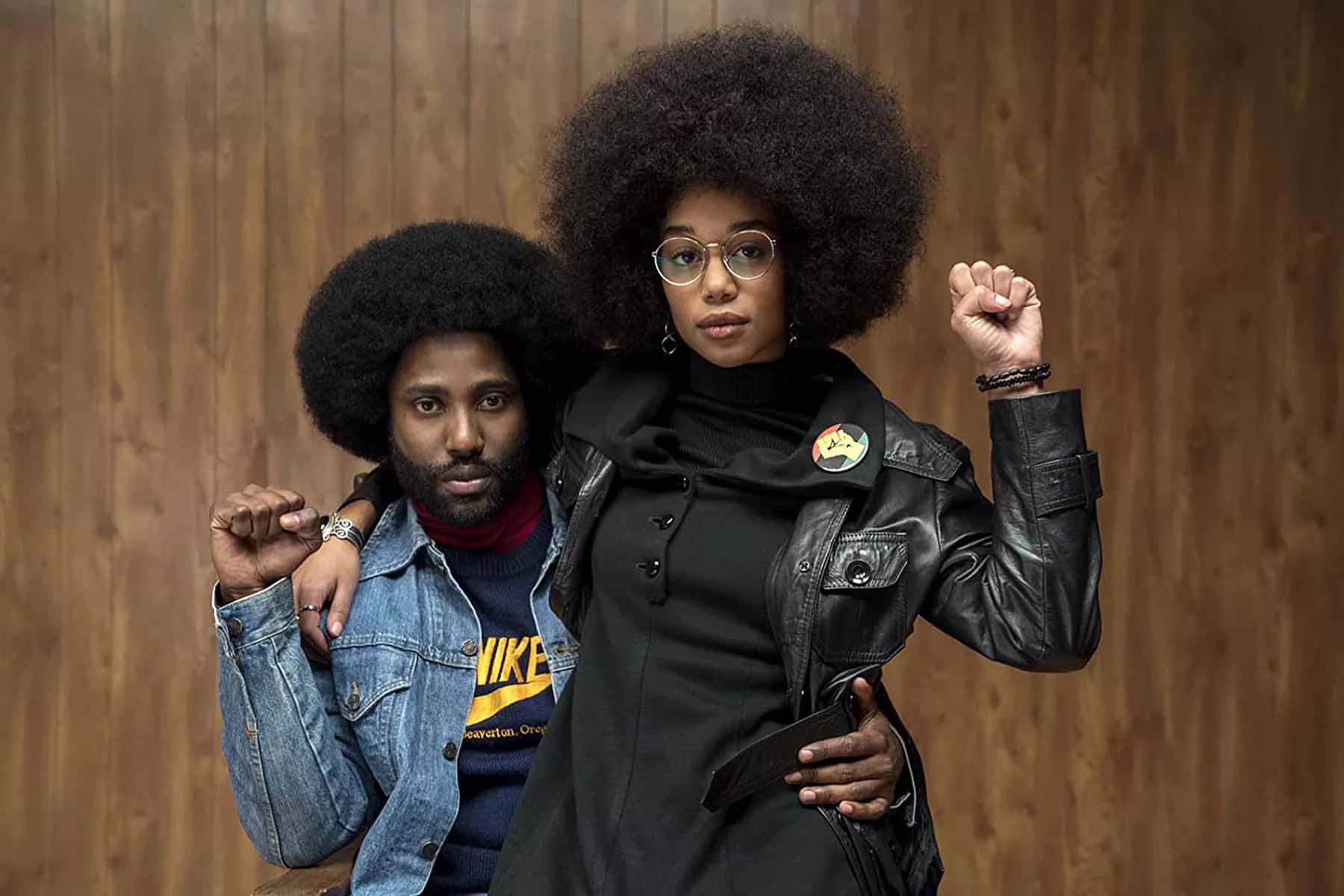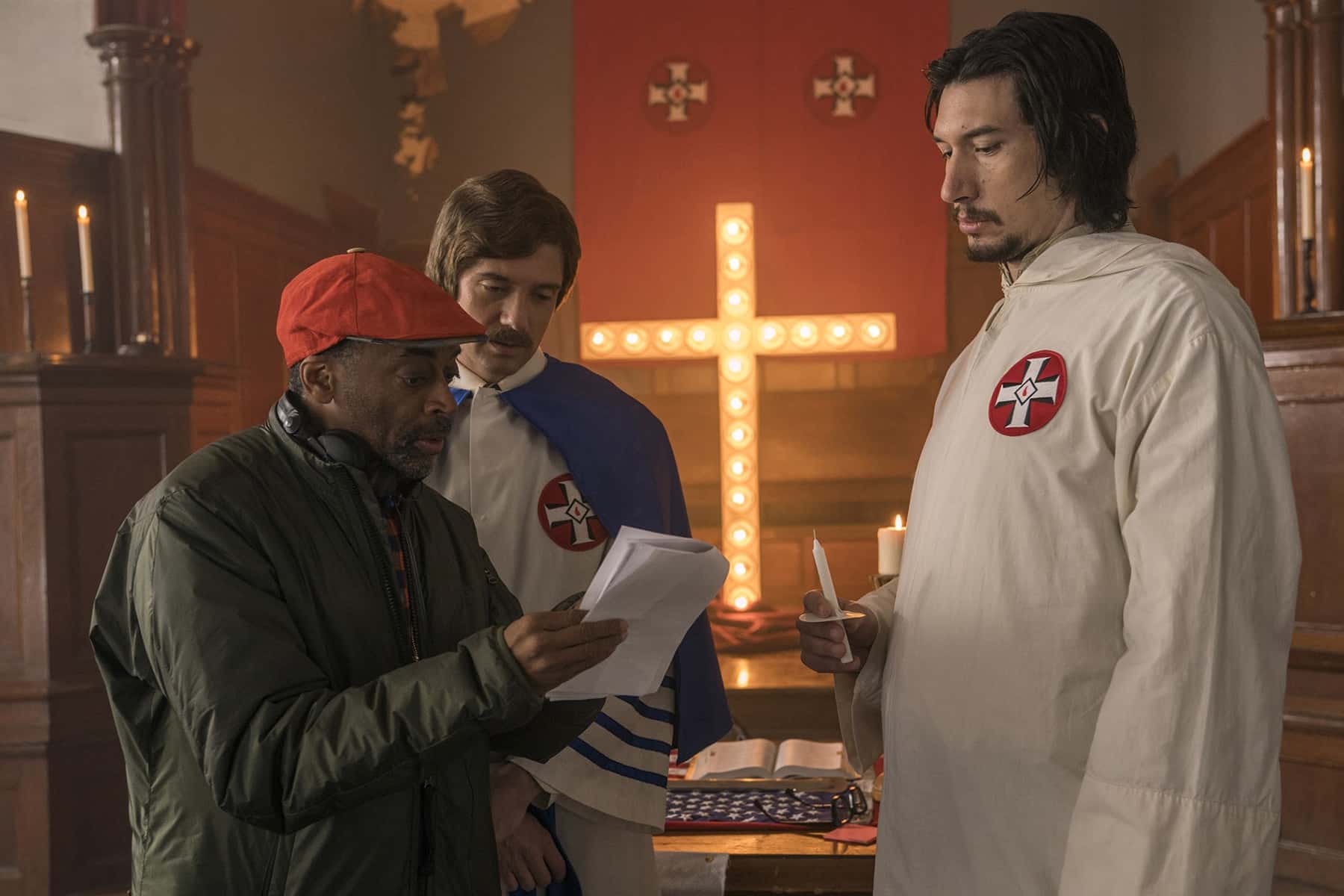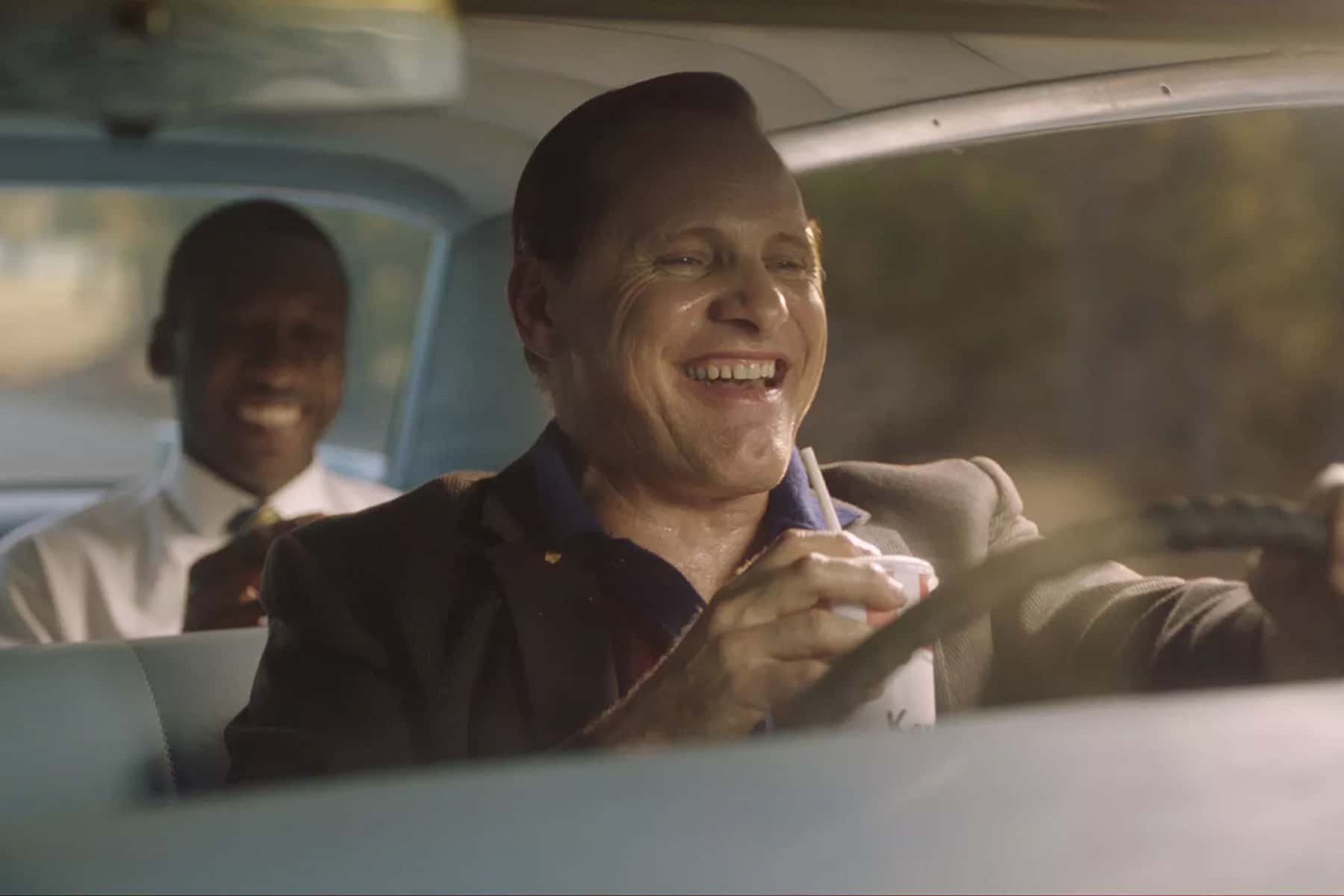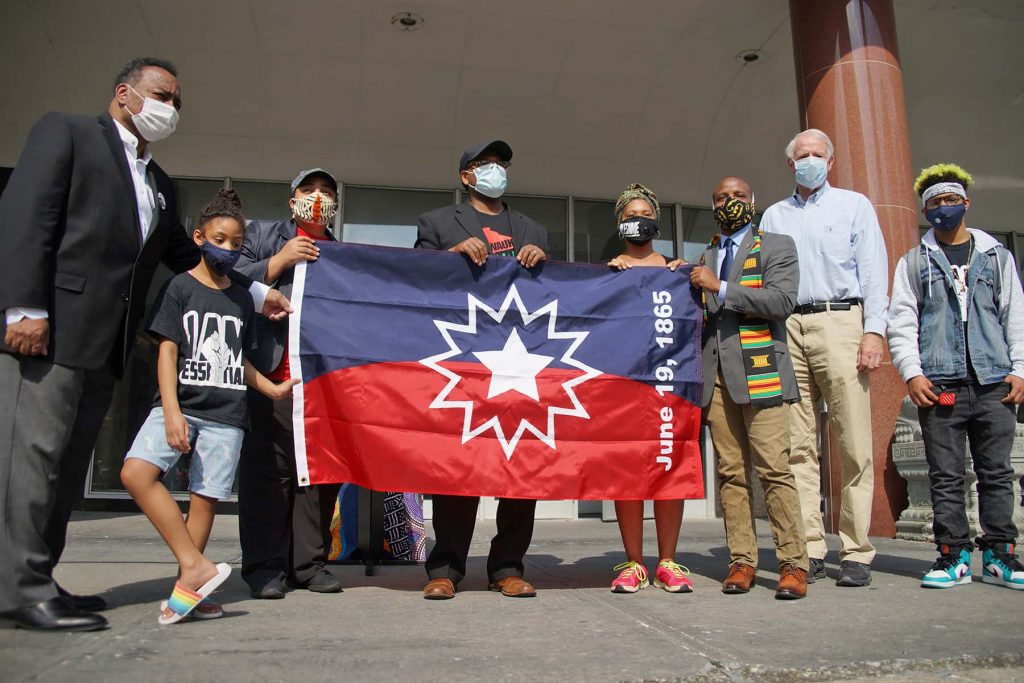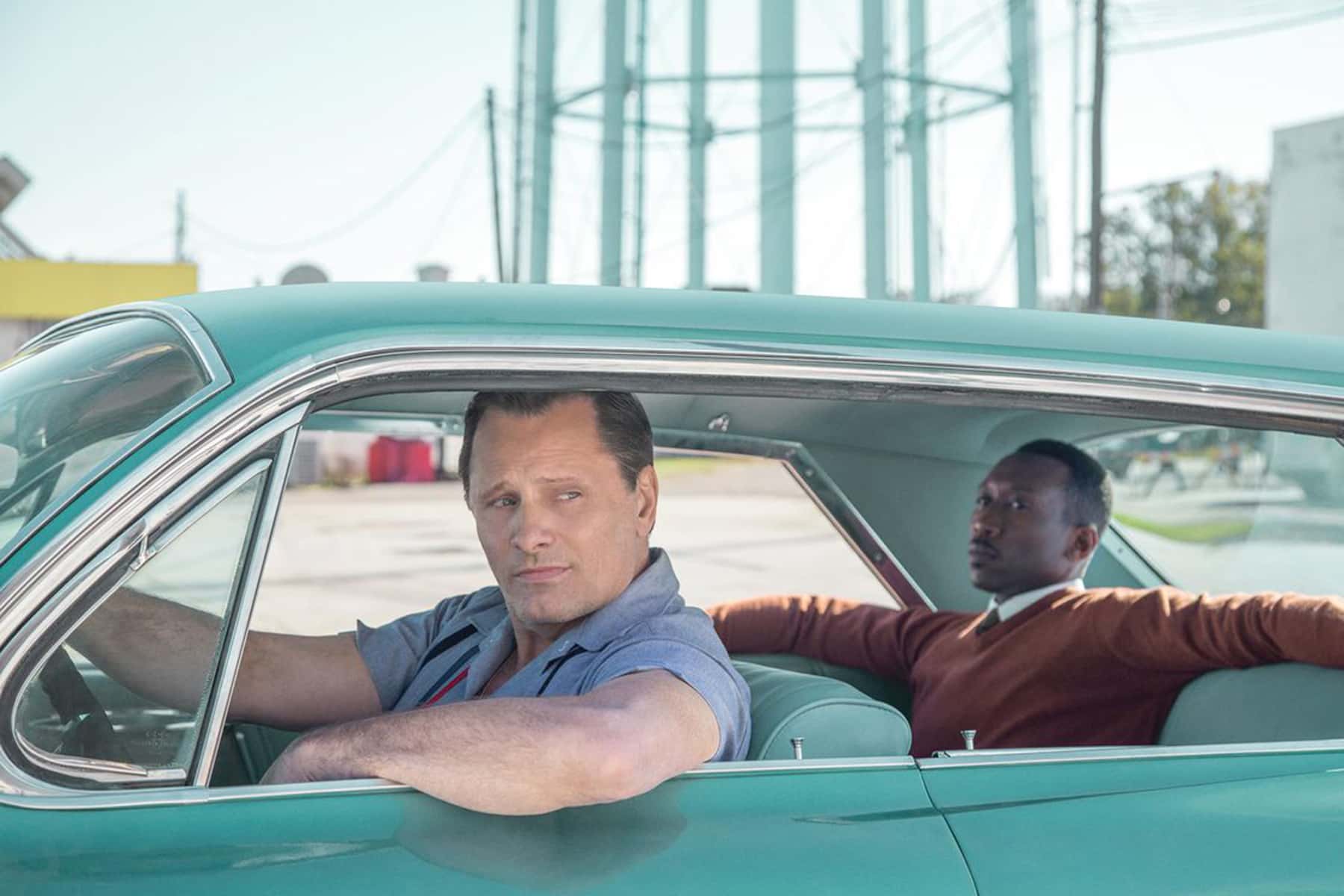
“Hollywood movies are much more than a matter of entertainment. Hollywood has become a major source of education. For the majority of Americans, Hollywood’s movies are a constant source of images, ideas, and data about the social world.” – Joe R. Feagin
In February 1899, Rudyard Kipling wrote a poem entitled The White Man’s Burden: The United States and The Philippine Islands. In the poem, he called on the United States to take up the “burden” of empire in the same way that many European nations had already done. The British at one time bragged that the sun never set on their empire.
The 2019 Oscars results show that this mindset is alive and well on a smaller scale. The Best Picture winner, Green Book is the latest in a long line of Hollywood films where a white person takes up the “burden” of saving people of color. For those unfamiliar with the film, it is supposedly the true story of a trip through the South where Dr. Donald Shirley, an acclaimed concert pianist, hires a a bouncer named Tony “Lip” Vallelonga as his driver for the several weeks.
I am a very close friend with the Shirley family. Dr. Maurice Shirley and his wife Patricia are the parents of one of my best friends, Karole Kimble. I have had multiple conversations with Karole over the past several months about her uncle and the family’s displeasure with how Donald Shirley was portrayed in the film.
Many critics have already written about this production being another “white savior” film. I call them Tarzan movies. As a young child I loved the Tarzan television show. I would come home to watch the program and see my “hero” Tarzan protect the poor black people in the “jungle.” I had no way of knowing at the time that this type of portrayal of white heroes was such a prominent theme in American film, television, and literature. Some of America’s favorite stories keep the theme alive and well.
In the iconic novel Tarzan by Edgar Rice Burroughs, John Clayton (Lord Greystoke) is abandoned on an island with his bride Lady Alice. They are on a journey to West Africa when a mutiny occurs onboard the ship they are passengers on.
“Lord Greystoke, was commissioned to make a peculiarly delicate investigation of conditions in a British West Coast African Colony from whose simple native inhabitants another European power was known to be recruiting soldiers for its native army, which it used solely for the forcible collection of rubber and ivory from the savage tribes along the Congo and the Aruwimi.”
After learning to master life among the Great Apes on the island after his wife dies, Tarzan eventually encounters the other people on the island. Burroughs introduces the reader to them in this way.
“Their yellow teeth were filed to sharp points, and their great protruding lips added still further to the low and bestial brutishness of their appearance.”
These black “brutes” would eventually learn to love Tarzan, who lords over them as well as the animals on the island. These black people would grow to depend on Tarzan as their protector from the wild beasts. During the course of the immensely popular novel he becomes a true “white savior.” This theme is an important part of the canon of European and American literature. Derogatory language and racial slurs against blacks are common in many of these American “classics.”
Last fall PBS announced America’s 100 favorite books. Many classics with racial issues were on the list. To Kill a Mockingbird was voted America’s favorite novel despite the fact the word nigger is used nearly fifty times in the book. Gone With the Wind came in sixth place. The Help was number sixteen on the list. The Adventures of Tom Sawyer was seventeenth on the list. The Adventures of Huckleberry Finn did not make the top one hundred, but has been a favorite book for many Americans since it was published in 1885.
The list of White Savior films is long. (White Savior character in parentheses)
- 2019: Green Book, won best picture (Viggo Mortensen)
- 2016: Hidden Figures, nominated for best picture (Kevin Costner)
- 2016: Free State of Jones, (Matthew McConaughey)
- 2014: 12 Years A Slave, won best picture (Brad Pitt)
- 2010: Blindside, nominated for best picture (Sandra Bullock)
- 2010: The Help, nominated for best picture (Emma Stone)
- 2009: Avatar, nominated for best picture (Sam Worthington)
- 2009: The Soloist, (Robert Downey Jr.)
- 2007: Freedom Writers, (Hillary Swank)
- 2006: Crash, won best picture (Sandra Bullock)
- 1995: Dangerous Minds, (Michelle Pfeiffer)
- 1990: Dances with Wolves, (Kevin Costner)
Another race-based genre are the buddy movies with a white guy and his black sidekick. Die Hard With a Vengeance (Bruce Willis and Samuel L. Jackson), White Men Can’t Jump (Woody Harrelson and Wesley Snipes), Forrest Gump (Tom Hanks and Mykelti Williamson), Pulp Fiction (John Travolta and Samuel L. Jackson), and Lethal Weapon (Mel Gibson and Danny Glover).
What each of these films has in common are non-white characters who lack agency. They are in some cases literally carried by the white character (Forrest Gump). Many of these films are presented as being “based on a true story.” This simple attachment to the promotion of a film allows people to believe that everything in the film is true. Obviously film makers and screenwriters use “creative license” to add elements of interest to films. This is perfectly acceptable because it is necessary to add dramatic elements to entertain the audience.
The major problem with Hollywood’s interpretations of black people is the studios that produce these films are owned and controlled by white men. It is not that they cannot accurately portray blacks, it is that for the most part they choose not to.
The Academy of Motion Picture Arts and Science is ninety-two years old. In 2012, Oscar voters were 94% white. By 2016 they were still 91% white. Only 3% were black in 2016. There has been scant progress made since then. Over six thousand members are lifetime appointees. There are only just over five hundred non-whites who vote for the Oscars each year. Even more importantly, the executive branch which finances the films, is 98% white.
The Board of Governors sets the Academy’s strategic vision and consists of sixty-two governors, only six of them are black. The Academy was condemned in 2016 for failing to nominate any non-white actor for Oscars and ignoring films featuring black characters for nominations. The ensuing #OscarsSoWhite outrage led them to make a vow about doubling female and non-white members by 2020.
According to an article in the New York Times, Bill Mechanic, a former 20th Century Fox and Walt Disney Studios executive, resigned from the Academy’s board and stated in his resignation letter, “We have settled on numeric answers to the problem of inclusion, barely recognizing that this is the industry’s problem far, far more than it is the Academy’s.”
His point was very accurate. The Academy is simply a microcosm of the Hollywood machine. In 2017, the Media, Diversity & Social Change (MDSC) Initiative at the USC Annenberg School for Communication and Journalism completed a study of the 900 top films from 2007 to 2016 (excluding 2011) consisting of the 100 top movies of 2016. They analyzed 39,788 characters for gender, race/ethnicity, LGBT status, and disability. The results are eye opening. Looking at the 100 top films of 2016, 25 of them featured no black/African-American characters, 44 included no Asian or Asian-American characters and 54 depicted no Hispanic/Latino characters.
The whitewashing in films is a consistent and persistent quality of what Hollywood produces and sells around the world. Hernan Vera and Andrew Gordon explored the history of whiteness in films for their 2003 book, Screen Saviors: Hollywood Fictions of Whiteness. They explored the history of racial stereotyping of blacks in Hollywood going back to the early 20th century. Those negative images were the basis for many of the persistent misperceptions of blacks today, because they had been consumed by millions of people at home and abroad for about one hundred years.
Hollywood has a bad track record when it comes to representations of Asians, Native Americans, Latinx, and Middle Eastern populations as well. Asians and Pacific Islanders have been repeatedly portrayed in a negative way. From the early years of yellow-face roles to whites playing Asian characters, Hollywood has done a huge disservice to Asians. Longstanding negative stereotypes of Latinos are also an important component of what mainstream racists believe about Spanish speaking people. Likewise, Native Americans have been represented in extremely disgraceful ways where whites in “redface” played them as well. Arab “looking” people have been stereotyped as “terrorists” for so long that people forget the practice precedes the 9/11 attacks.
In their book, Vera and Gordon quote a white woman who loves the film Gone With the Wind. She asserts that the film has “taught three generations [of whites] how to be Southerners.” Indeed it has. Gone with the Wind is still making money and being shown in countries around the world decades after its 1939 release.
Likewise the silent film Birth of a Nation (1915), originally titled The Clansman, was based on a book with the same title and at the time was one of the most acclaimed films in U.S. cinematic history. It was literally a re-writing of the history of the Civil War and Reconstruction, which shows the Ku Klux Klan as the heroic figures who saved the South, and literally the entire nation, from the menace of black elected officials. It was screened in the White House on March 21, 1915. Using depictions of blacks as villains and violent rapists, as well as being a threat to the social order, the film appealed to white Americans. Until Gone With the Wind surpassed it, the racial propaganda film was the highest grossing movie Hollywood ever had.
President Woodrow Wilson said, “it is like writing history with lightning, and my only regret is that it is all so terribly true.” White actors in blackface performed most of the heavily caricatured black roles in the film. The cross burning scene led the real Ku Klux Klan to adopt it as a ritual for the first time. Life imitating art.
White people who have had little to no real interaction or contact with blacks have been bombarded their entire lives with these images, and it frames how they see black people.
“The country’s image of the Negro, which hasn’t very much to do with the Negro, has never failed to reflect with a kind of terrifying accuracy the state of mind of the country.” – James Baldwin
Patricia Devine, a psychology professor and director of the Prejudice Lab has studied unconscious racial bias and found that it is possible to act in prejudicial ways while sincerely rejecting prejudiced ideas. She demonstrated that even if people do not believe racist stereotypes were true, those stereotypes, once absorbed, can influence behavior without people being aware of it. The impact can be even stronger if the messages come in the form of imaged-based media. With this understanding, it is easy to see how poisonous stereotypes play such an important role in how whites interact with blacks and others considered non-white.
Hollywood has attempted to tackle the issue of race on many occasions. The films Green Book and Spike Lee’s BlacKkKlansman are two of the latest attempts. Neither film does a good job in my opinion. They are both sold as being based on a true story. Despite this assertion, they are both only marginally accurate accounts of real life events. They both take great liberties with the truth and, as a result, tarnish any attempt to discuss race cogently.
The title for Green Book comes from the famous Negro Motorist Green Book, published by Victor Hugo Green and his wife Alma Green from 1936-1966. It was a vital travel guide to help blacks find safe places to buy gas, purchase food, use the bathroom, or to sleep as they drove around the the country. In its first edition, it was a resource for blacks traveling in New York state only. The guide was an invaluable tool for blacks that knew interstate travel could be exceptionally dangerous, even outside of the South. The guide listed what places were safe, but also establishments that were of high quality.
The film shows the white character, known as Tony Lip, using the book instead of Dr. Donald Shirley. Another white character that works for Dr. Shirley’s record company gives it to Lip, telling him how it will be useful as he drives Dr. Shirley around. They depict one of the places from the guidebook as a denizen of black misbehavior. Lip shoots dice with a group of black men – he wins by the way – as Dr. Shirley performs for an all-white audience.
Tony Lip chastises the Green Book as false advertising when they come upon a motel with stereotypical, uncouth black characters that are playing horseshoes in the common courtyard. This mischaracterization of the Green Book led Maira Liriano, Associate Chief Librarian of the Schomburg Center for Research in Black Culture – which holds the largest collection of Green Books in the country, to respond in an interview with “Shadow and Act.”
“I’ve never heard that, in the years that I’ve been working with researchers and scholars studying the Green Books, I’ve not encountered ‘false advertising’ within the Green Books. So I don’t think that was very accurate. I’m not saying every single place was wonderful and fabulous that was listed in the Green Books, but I feel like they don’t do it justice (in the film).”
Dr. Shirley, the son of an Episcopalian minister from Pensacola, Florida is portrayed as a man who looks down upon and is disconnected from his own people. Family members have told me that this is one of the most disturbing lies in the film. Dr. Shirley was very much connected to the black community and spent countless hours enjoying the company of his family. Tony Lip chastises Dr. Shirley by telling him “I’m Blacker than you!” He even “teaches” Dr. Shirley how to eat fried chicken, which the film version of Dr. Shirley claims to have never tasted before. Are we to believe that a black man and son of a minister in the South had never eaten fried chicken?
Tony Lip, who had a sixth grade education, was the centerpiece of the film as he chauffeured a black man – who has three doctorate degrees and six Master’s degrees – around the South. In real life, the tour was to perform at several Historically Black Colleges and Universities (HBCU’s), not random white nightclubs.
The film shows the white character, who is openly and brazenly racist, as the conquering hero. In an early scene of the film, Tony Lip is so disgusted that his wife offered glasses of water to two black men in their home that he later throws the glasses in the trash. The filmmakers used this scene to set the bar for how racist Tony Lip was at the beginning of his journey to show his progress of becoming less racist. It is another common theme in Hollywood. A blatantly racist white character overcomes his racism by spending a small amount of time around a forgiving black person and magically becomes less racist. This magical black character is somehow meant to show that white racists can find a “black pal” and overcome a lifetime of prejudice. Never mind that most of the debilitating and harmful impacts of racism are institutional. Tony Lip can protect Dr. Shirley during personal encounters, but has no way of undermining the system of segregation blacks have been victimized by.
He saves Dr. Shirley on numerous occasions, as all “White Savior” characters must do in these Tarzan movies. Shirley refuses to drink at a black establishment and instead sneaks off to hook up with a white man at the local YMCA. He is arrested for engaging in sex with the white man, and Tony Lip comes to the rescue. In another scene, Tony Lip saves Dr. Shirley from a group of gun toting white racists at the whites-only bar, and then berates Dr. Shirley for going out alone without his protection. Tony Lip even saves Dr. Shirley by firing a gun into the air when a group of blacks try to mug Dr. Shirley after flashing a wad of cash in a bar.
By the climax of the story, Tony Lip is a reformed racist. He is still a racist, but not as bad as he used to be. The two men become lifelong friends at the end of the film. Once again the magical, forgiving black character is the mechanism by which the “White Savior” is redeemed.
Green Book is a actually blatantly Oscar-baiting flip on Driving Miss Daisy, which won the 1990 Oscar for Best Picture in the same year as Spike Lee’s acclaimed Do the Right Thing was not even nominated in the main category.
Lee directed BlacKkKlansman, which was a nominee for best picture, and did not react well when the film Green Book won the top prize. Lee did win his first ever Oscar for best adapted screenplay for BlacKkKlansman earlier in the awards ceremony and gave an impassioned speech.
After being snubbed by the Academy for much better films in the past, Lee was as giddy as a five year old at Christmas leaping into the arms of Samuel L. Jackson. During his acceptance speech, among other things, he hearkened back to the four-hundred year anniversary of the first enslaved Africans arriving in Jamestown, Virginia in 1619.
“Before the world tonight, I give praise to our ancestors who have built this country into what it is today along with the genocide of its native people. We all connect with our ancestors. We will have love and wisdom regained, we will regain our humanity. It will be a powerful moment. The 2020 presidential election is around the corner. Let’s all mobilize. Let’s all be on the right side of history.”
Lee went on to say backstage that “This film — whether we won best picture or not — this film will stand the test of time being on the right side of history.” It was clearly a statement directed at President Trump.
In BlacKkklansman race is at the center of the story. It was based on the memoir by the same name written by Ron Stallworth. Stallworth was the first black detective in the Colorado Springs Police department. After seeing a classified ad for the Ku Klux Klan in the newspaper, he responds to the P.O. Box address by showing interest in joining the group. He mistakenly uses his real name.
Eventually he manages to pretend to be a white man and infiltrates the group by having phone conversations. In the film, another detective actually poses as Stallworth in order to meet with the Ku Klux Klan members. That partner just so happens to be a Jewish officer. For those familiar with the Ku Klux Klan, they are a racist organization that despises blacks and Jews. In real life, the four different officers who pretended to be Ron were not Jewish. The choice of making the officer in the film Jewish was done to add dramatic content and an additional storyline.
Lee could not simply leave the anti-black perversions of the Klan as the only focus. I find this problematic because once again the film tells the viewing public it is based on true events. The Jewish officer in the film had his life threatened because the Ku Klux Klan members suspected he was Jewish. In the real story, none of the lives of undercover officers were imperiled at all. There was a chance that they would be exposed as cops, but nothing as dramatic as the scene where detective Flip Zimmerman is nearly killed.
In a typical format, a racist character is created for dramatic effect because the drama of reality is not enough to hold the interest of moviegoers. Master Patrolman Andy Landers plays the single non-Klan racist in the film. Stallworth said in his book that there were a number of racist cops he had to deal with. In the end Landers was arrested by the team, showing that the bad cop got what he deserved for being a racist.
Stallworth’s character was told to attend a single “pro-black” rally where Stokely Carmichael would be speaking. His infiltration of the group, and checking on any dangerous and potentially racist plots, were concocted for the film. In real life he spends months investigating the group. At the program he attends in the film, he meets and eventually falls for a young Afro wearing activist named Patrice who becomes his love interest. She too is a fictional character.
The Ku Klux Klan members are portrayed in typical Hollywood style as a bunch of redneck buffoons. They bungle their way through the movie being tricked by Ron and Flip. They plot a bombing to kill Patrice. Spoiler Alert: at a dramatic point the bomb kills several of the Klan members instead. Spoiler Alert: The entire bomb plot is made up.
The Klan that Stallworth infiltrated did nothing even remotely dangerous. No Klan members were arrested in the real story as Stallworth wrote it. The investigation was scuttled because his boss was concerned the police department could get some bad publicity. One of the few accurate things in the movie was the interaction Stallworth had with Grand Wizard David Duke.
The depiction of the character Ivanhoe reminds me of how Hollywood loves to portray these white terrorists as a bunch of clowns who are mostly harmless. The evidence is overwhelming that these people are something other than harmless. They have wreaked havoc on the lives and communities of black people for over one hundred and fifty years, since their founding in Pulaski, Tennessee just after the Civil War ended. Other similar terrorist groups like the Knights of the White Camelia and the White Brotherhood contributed to the effort to make sure the newly freed blacks would not enjoy the freedom they had been given.
The first iteration of the Ku Klux Klan was so violent that the federal government outlawed them with the Ku Klux Klan Act of 1871. They murdered seven blacks that had been elected in 1867. In that bill, Congress gave President Ulysses Grant permission to use the military to suppress America’s first organized terrorist organization. The Klan raided areas where blacks were politically active, beating, maiming and murdering blacks and destroying their property, including schools and churches. Nine South Carolina counties were placed under martial law in the effort to crack down on the Klan. In 1882, the U.S. Supreme Court ruled that the law was unconstitutional but the Klan had disbanded by that time.
The group was reborn in 1915 in Stone Mountain, Georgia and eventually had over four million members around the country by the mid 1920s, including an active Klavern in Milwaukee. The Civil Rights Movement led to a resurgence of the Klan in the 1950s. Many of the murders of civil rights workers were carried out by Klan organizations around the country. The United Klans of America became the largest and most violent. The Ku Klux Klan is much smaller today but still menaces blacks around the country.
The most disturbing element of Spike Lee’s film was a series of scenes equating the Black Power Movement with the Ku Klux Klan. To those unfamiliar with the history, that false equivalency left people with a sense of both groups being bad. Lee introduced a character named Jerome Turner, played by Harry Belafonte. Turner was sitting in a room with followers of the Black Power Movement recounting the ugly history of the May 1916 lynching of Jesse Washington in Waco, Texas.
The seventeen year old was accused of murdering a fifty-two year old white woman. He was tried and found guilty. The jury deliberated for just four minutes. Washington was taken out of the jail as a mob of up to 20,000 whites gathered around the courthouse. His jailers handed him over to the mob after his conviction. The mob wrapped a heavy chain around his neck and dragged him to city hall, beating and stabbing him along the way. A separate mob prepared to burn his body. They piled up a bunch of dry-goods boxes, which they ignited while pouring coal oil over Washington’s naked body. They hung him from a tree while slowly lowering and raising his body over and over into the flames for several hours. Later they placed his remains in a bag and dragged it over six miles to Robinson, Texas where the woman he had been accused of killing lived. His body was hung from a utility pole until a local Constable took it down and had it buried.
As the Turner character in the film tells the young people about the lynching, Lee swings back and forth to scenes in a Klan meeting. He juxtaposes the two groups as being equal. You see horrific images of the lynching of Washington and are quickly transported back to the Klan meeting. In the end, the Black Power advocates raise their fist while shouting “Black Power.” Then you see members of the Ku Klux Klan shouting “White Power.” The false equivalency between the two groups is upsetting.
Not only was I bothered by the parallel look at the two groups, I felt disgusted that a heroic figure such as Harry Belafonte was used to portray a man that was equated with David Duke. How dare Spike Lee claim that the film would stand “on the right side of history.” The film created false narratives with several of the main characters being made-up people, when the memoir by Stallworth provided great material for a really good, honest film.
I have heard people singing the praises of the film and I honestly did not know how to react. A film nominated as best picture, which equates the Black Power Movement with the Ku Klux Klan, was directed by one of the most acclaimed black filmmakers of all time. I left the theater convinced that Hollywood is incapable of telling the truth about race.
As I sat for lunch with a friend recently complaining about Green Book, he said, “you know it would have never been made if it was just about Dr. Shirley.” What a sad testament. Hollywood is afraid to use its immense power to make films that explore racism as this monstrously powerful “elephant in the room” that I try to expose to people daily.
Hollywood produces films where whites just have to be heroes, even if they are racist. The flaws of these racist white people are excused consistently or simply erased. The main character of the Free State of Jones is based on was a despicable racist who was also a terrible human being. But Hollywood chose to make him a heroic savior of black people.
Hollywood should open the doors of opportunity, where marginalized people get to tell their own tales. Allow them to be the heroes they have been in their true stories. Kevin Costner has played the role of “White Savior” in Hidden Figures and Dancing with Wolves, and the fiction makes us feel good but helps change nothing.
Denzel Washington should not have to play a crooked, violent cop to win an Oscar. Halle Berry should not have to prostrate herself to be a whorish character to win an Oscar. Great black musicians should not have to be humiliated by having It’s Hard Out Here for a Pimp win an Oscar for best original song. Spike Lee should not sell himself out by creating a film to make white people feel good about racism to win an Oscar.
Children of color need to see heroes who look like them. White people need to see heroes who are not white. Stereotypes of white people abound in Hollywood. Most of them are positive, and usually far from the truth that Hollywood presents. Filmmakers of color need support and power to create movies that their communities can be proud of without compromising the truth. You have made progress in empowering women in Hollywood. It is time you take it to the next level and include people of color.
“Until lions tell their tales, the story of the hunt will always glorify the hunter.” – African Proverb
© Photo
Universal Studios and Focus Features

